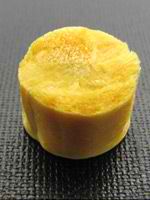Recently we have heard about the oil spill that occurs in the Gulf of Mexico. Approximately 4 million gallons of crude have been spilled in the gulf coast. But what new methods have being using to clean the ocean surface. Scientists are tasked with creating new ways to help clean up future oil spills. Like sponges to sop up oil spills, some investigators are creating a sponge made of clay and plastic that absorbed oil from water, but leaves the water behind, it commercial name is AeroClay. They thinks that using this material the oil would still be usable, but from now they are determine the best shape and size for the sponge to use in an industrial scale. Another alternative that is in force is the use of Oil-Eating Superbugs, is the use of microbes that have been genetically altered to naturally break down the petroleum molecules. This method is still under investigation, because putting them in contact with an environment like the ocean, these microbes die quickly. Other alternative that these investigators are studying is the use of indigenous bugs introducing a genetic material to give local microbes DNA to allow them to break the oil. On the other hand, some investigators are improving Chemicals herding agents to fatten the spill for burning, these agents work shrinking the oil in surface area. Allowing the spill get thicker, helping to remove more oil before it’s burned.

Aeroclay sponge
For more information go to National Geographic: Daily New
